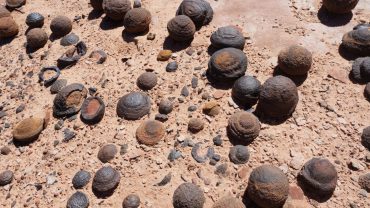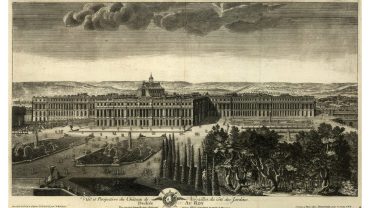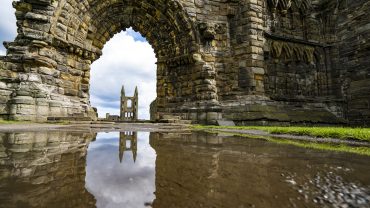The fifteenth century was the beginning of the Age of Discovery and some of the greatest maritime explorers in history – such as John Cabot, Vasco da Gama, Piri Reis, Zheng He, Christopher Columbus, Amerigo Vespucci and Pedro Álvares Cabral – sailed the world’s oceans in search of new worlds. One of the lesser known of the great fifteenth century explorers was Bartolomeu Dias, but his achievements were no less extraordinary.
Portugal and other European countries had had trade ties with Asia for centuries, but the overland route, including the famed Silk Road, was arduous and fraught with peril in the form of hostile terrain, bandits, and political instability. In contrast, the sea route around the Cape of Good Hope, despite its own challenges and risks, offered a more direct and potentially faster way to reach Asia from Europe.
Dias’s successful navigation of this route was a critical turning point, paving the way for Europe’s naval expansion and enhanced trade with Asia. This significant achievement in global exploration also laid the foundation for future expeditions to uncover new territories and prospects.
This is the remarkable story of the voyage of Bartolomeu Dias.
The Early Life of Bartolomeu Dias

Bartholomew Diaz on his voyage to South Africa, 1878. (Credit: Fine Art Images/Heritage Images via Getty Images)
Unlike most of the well-known fifteenth and sixteenth century explorers whose biographies are often well detailed, almost nothing is known about the early life of Bartolomeu Dias, sometimes written as Bartholomew Diaz. It’s likely he was born somewhere between 1450 and 1455, possibly into a family with a maritime background.
One of the issues surrounding the accuracy of information concerning his early life was that there were a number of Portuguese mariners also called Bartolomeu Dias, or similar variations of the same spelling. However maritime historians are broadly agreed that he came from a family with a strong seafaring tradition, and probably served at the court of King João II in a minor capacity.
For Bartolomeu Dias, discovery was in his blood and there’s evidence to suggest he may have been trading ivory along the coast of Guinea in West Africa as early as the late 1470s.
In 1481, it’s likely Dias joined an expedition led by Portuguese explorer Diogo de Azambuja to build a trading post and fortress called Castelo de São Jorge da Mina, known today as Elmina Castle, on the Gulf of Guinea in present-day Ghana. In fact it remains to this day the oldest European-built building south of the Sahara desert.
He also may have been part of the 1482-1484 expedition led by Diogo Cão, another of Portugal’s eminent adventurers, down the west-central African coast and up the Congo River, the second-longest river in Africa.
Cão was also tasked by João II to locate the southern tip of the west coast of Africa but the two expeditions he led ended in failure. In 1486, the king asked Bartholomew Diaz to take on the challenge.
The Remarkable Voyage of Bartolomeu Dias

King John II of Portugal (1455-1495) (Credit: © CORBIS/Corbis via Getty Images)
Commissioned by the king in 1486, Bartolomeu Dias’s historic voyage began in July or August 1487, when he set sail from Lisbon with the ambitious goal of finding a sea route to India. A bizarre side note to this astonishing adventure was that the king also charged the explorer Dias and his crew to find a figure known as ‘Prester John’.
Prester John was a legendary Christian king rooted in mediaeval European folklore who was said to reign over a vast kingdom in Asia or Africa. The origins of the myth likely emerged from various historical and mythical sources, including tales of distant Christian kingdoms, such as the Ethiopian Empire, and accounts of the Mongol Empire’s conquests. This mythical king was thought to possess immense wealth and wield considerable military might, making him an attractive figure for European Christians during the Crusades and the subsequent periods of religious and geopolitical conflict.
For Portugal in the late fifteenth century, finding Prester John was pivotal for its strategic and religious goals. As a burgeoning maritime power, Portugal aimed to expand Christianity and access new trade routes to Asia, especially for spices. The alliance with a powerful Christian king like Prester John was seen as a crucial counterbalance against the Muslim-dominated overland trade routes. This quest, though ultimately unfulfilled, spurred explorers like Bartolomeu Dias and Vasco da Gama to make paradigm-shifting maritime discoveries.
A Journey of (Good) Hope

Ruins of Lisbon after the earthquake and fires in 1755 (Credit: Sepia Times / Contributor via Getty Images)
Another fascinating element of the voyage of Bartolomeu Dias was that there are no contemporary records of the trip. An earthquake followed by a tsunami and uncontrollable fires in 1755 in Lisbon destroyed virtually the entire city. Due to this catastrophe, almost all the information known about the expedition comes from an historian named João de Barros who documented the trip around sixty years later.
The expedition left Lisbon in three ships – the São Cristóvão, the São Pantaleão, and a supply ship reported to have been captained by Dias’s brother Pêro (named Diogo in later sources) – and they carried with them a set of padrões. These were stone pillars left by Portuguese mariners to mark important land discoveries, serving as records of their exploration and claims of sovereignty.
They headed south along the western coast of Africa. This route was already partially known to the Portuguese due to earlier expeditions and they stopped at various padrões that had been previously planted by other Portuguese explorers. They passed the Canary Islands and the Cape Verde Islands, continuing southwards.
Crossing the Equator
Continuing south, Bartholomew Diaz crossed the Equator. This part of the journey was significant as it led the expedition into the Southern Hemisphere, where the constellations and weather patterns were unfamiliar to European sailors of the time. As an explorer, Dias was in uncharted territory.
By December 1487, they reached Golfo da Conceição, present-day Walvis Bay in Namibia. After carefully navigating their way due south down the Namibian coastline, the ships turned southwest and headed out into the open ocean of the South Atlantic.
There’s no agreed consensus as to why they made such a diversion – they may have been blown off course by storms, or Dias may have had knowledge of more favourable southeasterly winds, but whatever the reason, it worked in their favour.
The Final Push
Unknowingly, this change of course – which took them into the South Atlantic for as many as thirty days – diverted the ships on a broad arc around the southernmost tip of Africa. Eventually, the ships turned northward and rounded the Cape of Good Hope, supposedly without actually seeing it. This was a pivotal moment as it proved that the Atlantic and Indian Oceans were connected and that a sea route to India was possible.
The voyage of Bartolomeu Dias was over a thousand miles further than any previous Portuguese journey had accomplished. On March 12, 1488, they reached as far as the mouth of the Boesmans River, and planted the Padrão de São Gregório.
The Journey Back

View Of The Cape Of Good Hope In South Africa. (Credit: Heritage Art/Heritage Images via Getty Images)
The Bartolomeu Dias discovery was an astonishing accomplishment. Indeed, it’s said he wanted to push on to reach India, but his travel-weary crew, notwithstanding the fact that supplies were low, wanted to return home to Portugal.
Retracing their route, Dias and his crew finally saw the Cape of Good Hope which he named Cabo das Tormentas (Cape of Storms). After a sixteen month expedition which took in something close to 16,000 miles, they arrived back in December 1488, supposedly to a muted, if not nonexistent, reception.
The Last Hurrah of Bartholomew Diaz

Vasco Da Gama (Credit: Universal History Archive/Universal Images Group via Getty Images)
It’s believed that by 1494, Dias was back at the court of João II. In 1497, after not venturing back to the Indian Ocean for almost ten years – due in part to Portugal’s very expensive war with Morocco – Bartolomeu Dias was back on the ocean waves.
As well as assisting with the design of the two ships used by Vasco da Gama to sail to India, Dias went half the way with da Gama, stopping at Cape Verde while the rest of the expedition carried on.
What Happened to Bartholomew Diaz?

Cape Of Good Hope, South Africa. (Credit: Universal History Archive / Contributor via Getty Images)
In 1499, while part of an expedition led by Pedro Álvares Cabral, four ships, including one captained by Bartolomeu Dias, were lost in a huge storm off the Cape of Good Hope. Dias died doing what he loved, in a place that will be forever associated with his name.
Dias was married with two sons, Simão Dias de Novais and António Dias de Novais. A grandson, Paulo Dias de Novais, went on to become the governor of Portuguese Angola and founded Angola’s capital city, Luanda in 1575.
Bartolomeu Dias: Changing the Course of History

Painting of Bartolomeu Dias (Credit: DeAgostini via Getty Images)
Bartolomeu Dias’s historic expedition around the Cape of Good Hope stands as a monumental achievement in the annals of exploration. His daring voyage in 1488 not only redefined European understanding of the world’s geography but also laid the groundwork for the age of global maritime trade and exploration.
By proving the feasibility of a sea route to Asia around the southern tip of Africa, the voyage of Bartolomeu Dias significantly contributed to the decline of overland trade routes and ushered in an era of European expansion. Although his life was cut short in 1500, his legacy endures. He is remembered not just as a pathfinder who opened the seas to his compatriots, but as a pivotal figure who paved the way for the great explorers who followed, most notably Vasco da Gama, and forever changed the course of global history.












